Making things grow.
How to design an herb garden. An easy recipe for changing out the old (herbs) with the new.
Hello Everyone.
I've been thinking lately about how much the design of a kitchen and a garden impacts how we cook – not just functionally but the pure enjoyment of the space. Our movements become more fluid when the perfect triangle of the stove, sink, and refrigerator line up. The pathways that lead to the garden shed, compost, and water spigot have a similar well-planned effect and can determine the flow. However, once the design is in place, it is up to the gardener or the cook to figure out where to place all the plants and the essential tools of the trade.
Where to place my dried herbs was a significant consideration in my kitchen layout. Since I had counter space, I chose a 36-jar carousel, which fits nicely under the cupboard in a corner near the stove. In mom's kitchen, where I learned to cook, multiple plug-in appliances took up all the counter space – a juicer and electric teapot, the broiler oven, and toaster - and dried herbs and spices were hidden in a drawer. This drawer became an obsession, and I spent hours investigating, doing my best to memorize everything in it by imprinting the aroma with the name on the label.
I've since learned that cooking and learning about herbs are not things you can teach or memorize. They come from actively growing an herb garden. Swishing your hand over aromatic leaves constantly reminds you how to use them in a recipe. Knowing how a plant grows and when to harvest all contribute to sensory knowledge. Professional cooks say that it doesn't matter which herb you use in a recipe as long as it is fresh, and I agree. However, I learned to cook by reading classic tomes, and there are specific rules that I abide by.
Dried herbs are often bitter and indistinct compared to fresh ones, and I’ve tried those fresh herbs in plastic clamshells, the only option in winter. Yet I would never use them in summer because the real thing is outside the kitchen door. I grow culinary herbs in pots on the deck and in the kitchen garden as an understory to taller vegetables, but they seem happiest when they have their own space designed to allow plants to sprawl and multiply.
An herb garden is the best place to start if you are a new gardener because it requires little planning and only a rough design idea. Herb gardens offer a way to create chaos within a structure if this is your style. Treat them with tender abandon, yet provide structure by starting with a design to map out the layering of short, medium, and tall plants. Labels will help you get to know each of your plants at first, but then do away with them to test your sensory memory.
I think of my herb plants like spoiled children in my garden because I let them do what they want. Whatever makes them happy, flourish, and thrive is okay with me. Staggering and mass planting lead to a more impressive display and abundant harvest because they will never do well in a straight row.
Start with a completely weed-free bed because weeds will creep in as the plants mature, which is the bane of most herb gardens. Provide a location with full sun exposure and edge the bed with bricks or stones to structure the outline. Then, go wild with plants. If you have the time and ambition to start from seed, be patient, as many perennial herbs take a long time to germinate or mature into anything substantial in the first year. Annual herbs will give you instant success.
Every January, I repeat a ritual that I learned from Mom. She'd take the remains of the dried herbs in jars and whir them in a Cuisinart with sea salt. This resulted in an herb salt that she gave away at Christmas to friends who appreciated how to use it. Sadly, few did because herb salt is not typically found in a written recipe. A small pinch can be added to everything from eggs to meatloaf, roasted vegetables, or pasta sauce to amplify flavor. It’s a healthy alternative that all doctors should recommend, reducing salt intake while adding natural seasoning.
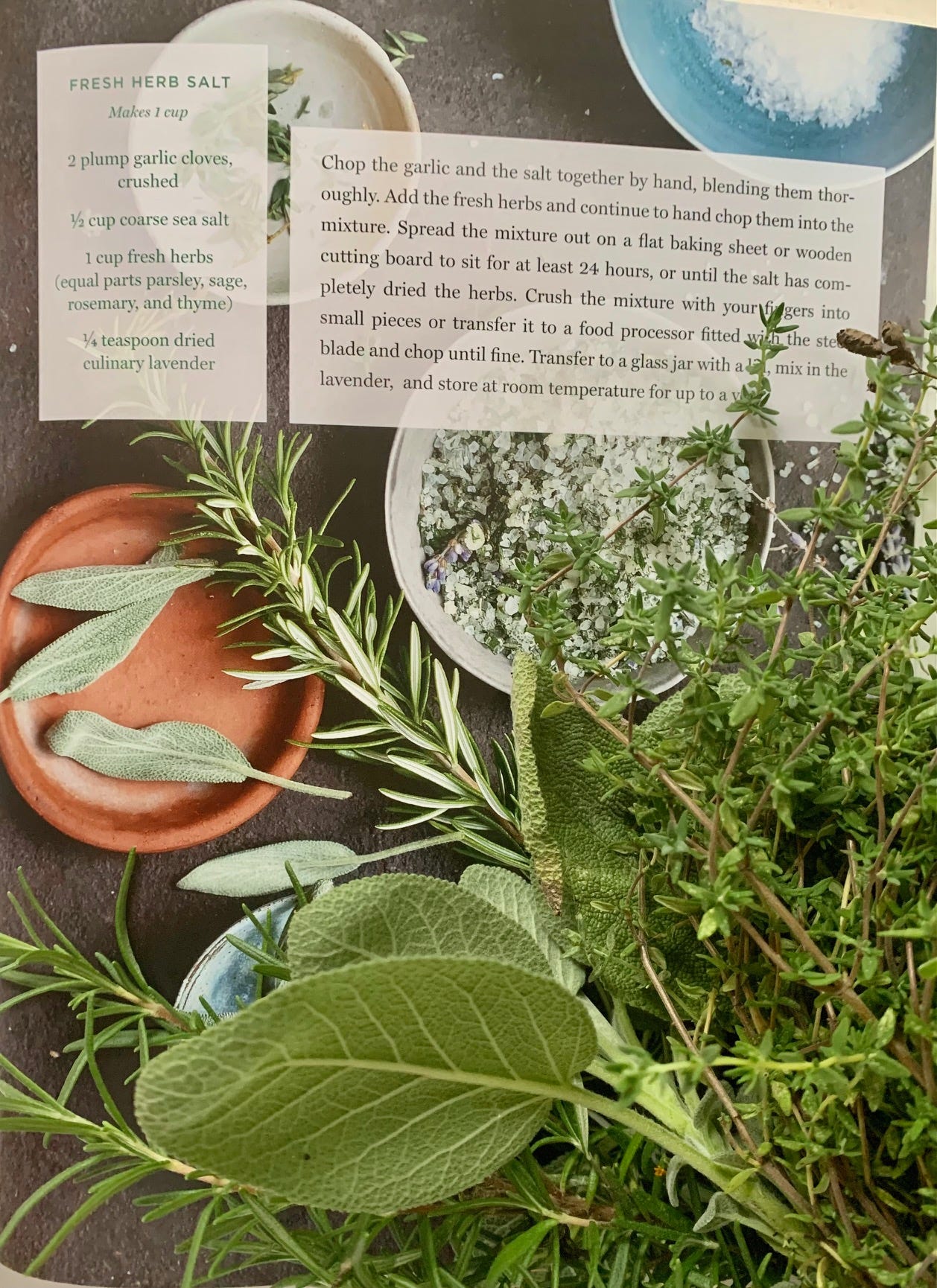
Swapping out the dried herbs once a year to replace them with fresh is essential when cooking with dried herbs. Spices are more tolerant and can be replaced every few years, but herbs lose their mojo quickly. To make herb salt with dried herbs, add what you have left in jars (within reasonable proportions), add an equal amount of coarse sea salt, and voila! Add a tiny amount of edible lavender, an essential secret ingredient in Herbes de Provence, to transport you to France.
This past week, I emptied all 36 jars in my carousel, washed them clean, and brought them to the local food coop, where I could buy dried herbs in bulk. It took an hour to funnel herbs and spices into each small jar, and luckily, the checkout person was patient—and no one was waiting behind me. The total cost to fill all 36 jars was less than $25; if I had bought new jars at the grocery store, it would have been closer to $100.
One of the most complex parts of planting any garden or flower border is getting the plant in the right place. I always move things "two feet to the left or right," yet when I look at my herb garden, it is always perfect. The plants love touching each other affectionately and merging in a mass, regardless of how well I’ve planned.
From my garden to yours,
Ellen Ecker Ogden
Author of The Complete Kitchen Garden and The New Heirloom Garden, artful garden designs and recipes for cooks who love to garden.



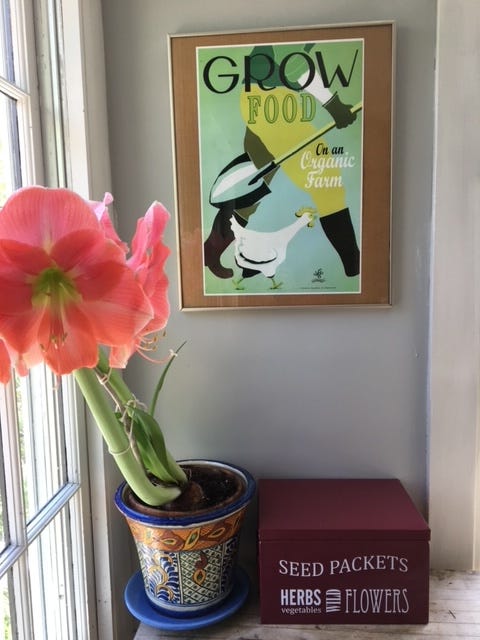
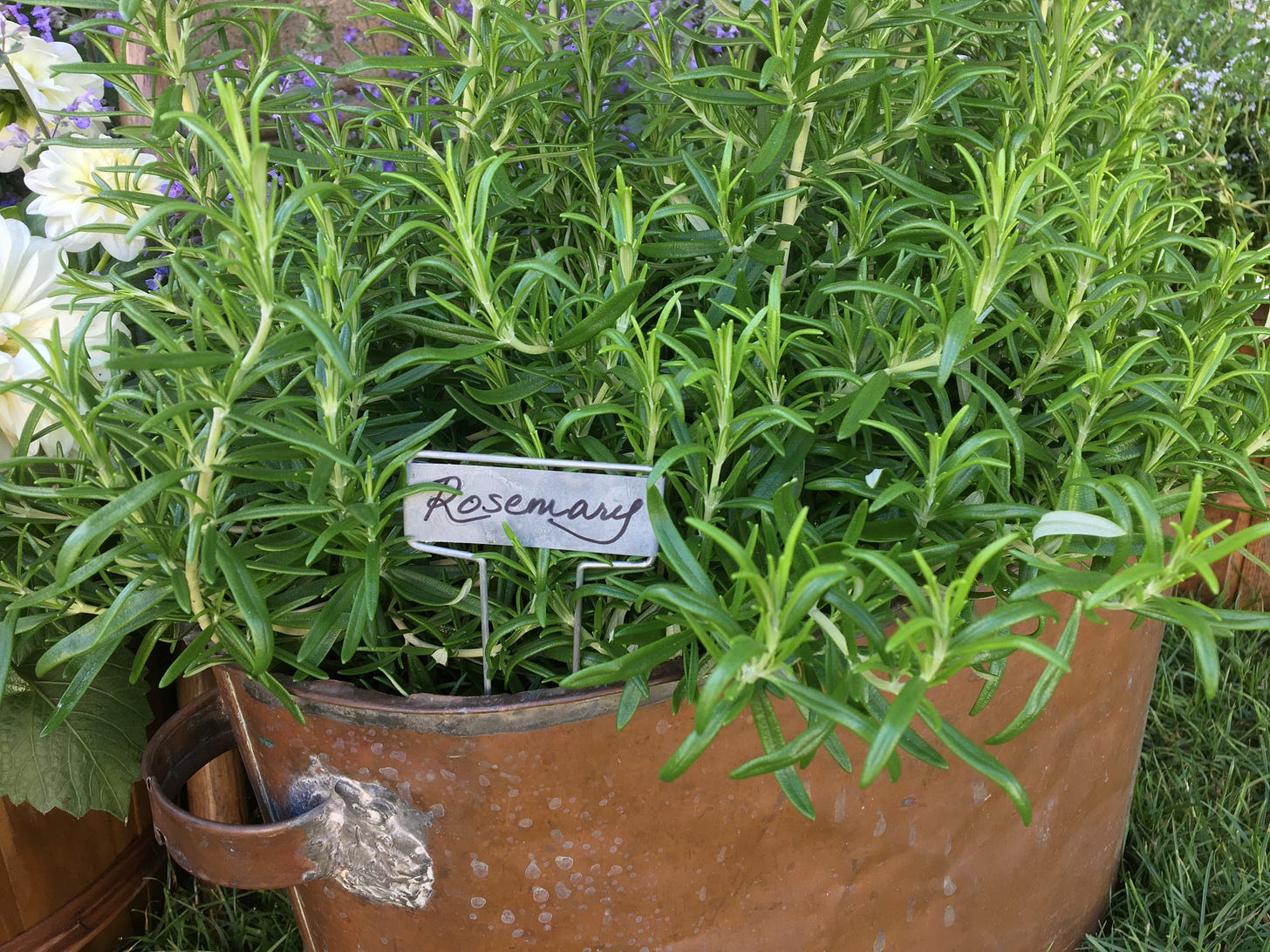
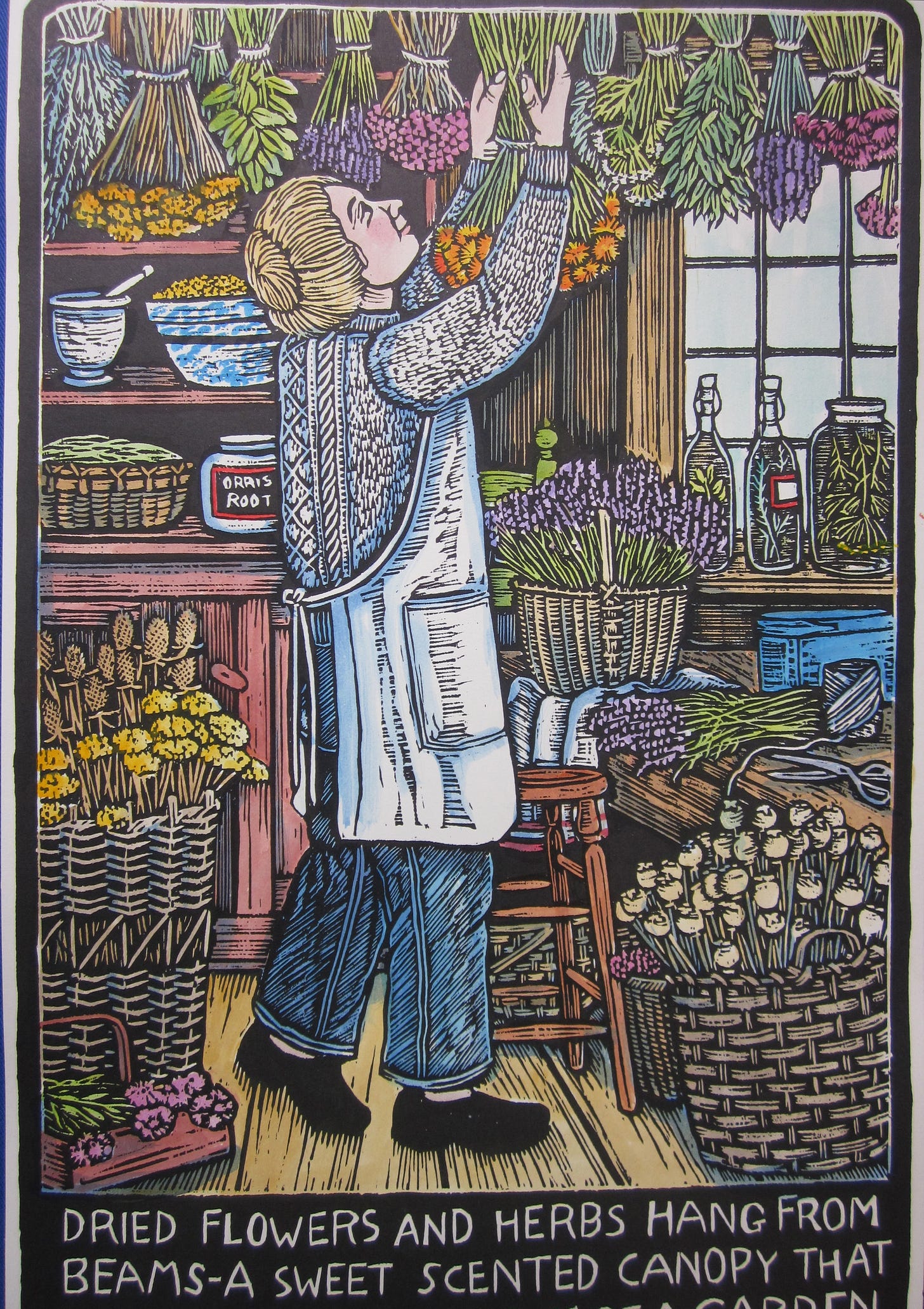
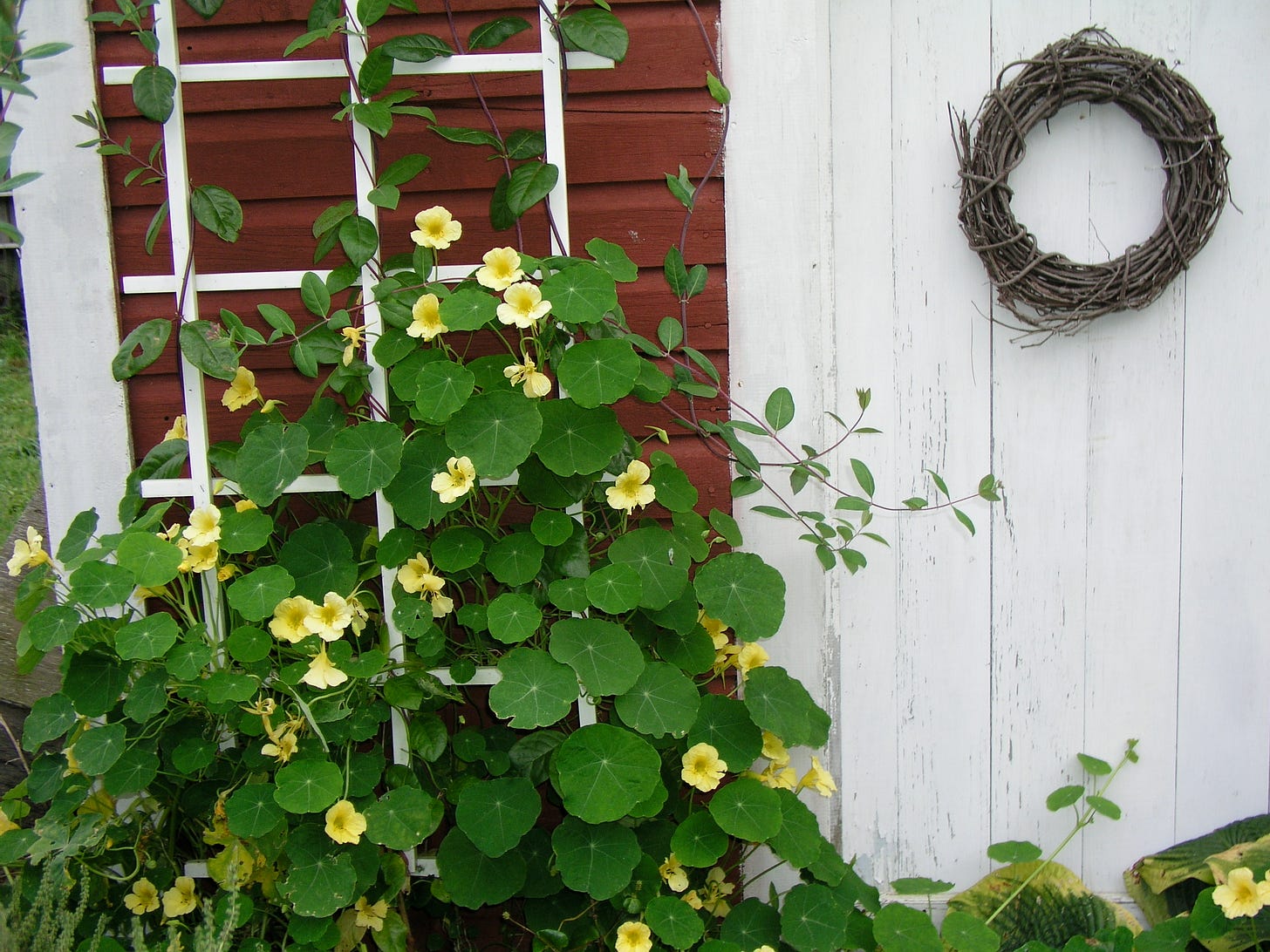
The relationship between kitchen and herb garden is not talked about enough- so thanks for this article, really enjoyed it. Having fresh herbs on my doorstep has completely changed how I cook too.
Makes me wish for fresh herb season!